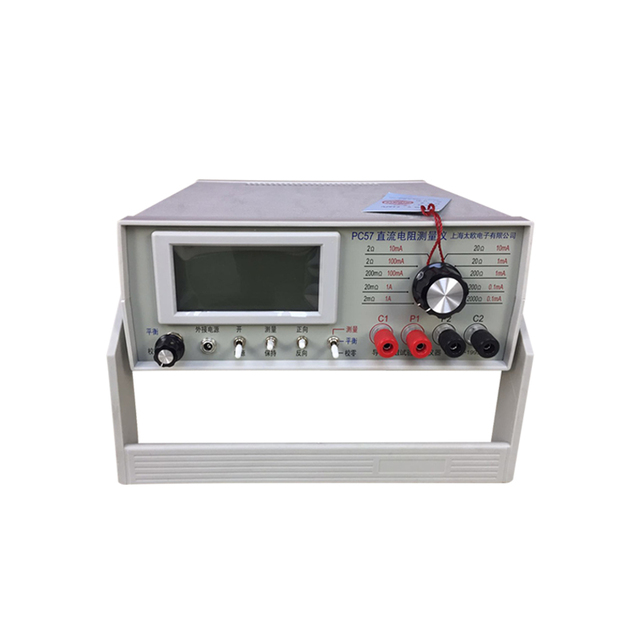Constant Temperature Tester for Measuring Conductor Resistance Performance
Understanding Conductor Resistance Testing at Constant Temperature
Conductor resistance testing is a critical aspect of electrical engineering that ensures the performance and reliability of electrical systems. It involves measuring the resistance of conductive materials, such as wires and cables, to ensure they meet safety and performance standards. One of the essential methods used in this process is the constant temperature resistance tester, which provides precise and accurate measurements vital for various applications.
What is Conductor Resistance?
Resistance, measured in ohms, is a material's opposition to the flow of electric current. In conductors, resistance is influenced by several factors, including the material type, length, cross-sectional area, and temperature. For instance, copper, a common conductor, has low resistance compared to materials like aluminum. However, resistance also varies with temperature, making it essential to control the testing environment.
Importance of Constant Temperature Resistance Testing
When conducting resistance tests, temperature fluctuations can significantly affect the results. As temperature increases, the resistance of most conductive materials also increases due to the heightened vibrations of atoms within the structure, which impede the flow of current. Therefore, ensuring a constant temperature during testing is crucial for obtaining reliable results.
Constant temperature resistance testers are designed to maintain a specific temperature throughout the measurement process. This stability allows for more accurate resistance readings, minimizing discrepancies that would arise from temperature variations. It is invaluable in critical applications such as power generation, maintenance of electrical infrastructure, and research and development.
How Does a Constant Temperature Resistance Tester Work?
A constant temperature resistance tester typically comprises several key components
1. Temperature Control System This system maintains the tester at a predefined temperature. Temperature sensors monitor the conditions, and heating or cooling elements adjust the environment to remain constant.
2. Resistance Measurement Circuit This circuit applies a known voltage across the conductor and measures the resulting current. The resistance is then calculated using Ohm’s Law (R = V/I).
conductor resistance constant temperature tester

3. Display and Data Acquisition Most modern testers come with digital interfaces that display live readings and log data for further analysis.
4. Calibration Standards Regular calibration against known resistance values ensures the tester remains accurate and reliable over time. This is crucial in maintaining the integrity of the testing process.
Once set, a technician places the conductor into the tester, and the system ensures the environment remains stable while the resistance is measured. Users can easily interpret the results, identifying any potential issues with the conductor itself or the connection interfaces.
Applications of Conductor Resistance Testing
Conductor resistance testing at constant temperature has numerous applications across various fields
- Electrical Utilities Power companies use resistance testers to assess the condition of transmission and distribution lines, ensuring they are within acceptable resistance limits to prevent failures.
- Manufacturing In production environments, it is essential to test components for quality assurance, ensuring they meet industry standards before they are deployed.
- Research and Development Laboratories and engineering firms rely on accurate resistance measurements to innovate and test new materials or designs.
- Maintenance and Repair Technicians use resistance testing to troubleshoot electrical systems, identifying faulty components that could lead to larger issues.
Conclusion
In summary, conductor resistance testing at constant temperature is a vital process in maintaining the integrity and performance of electrical systems. By controlling the temperature during resistance measurements, engineers and technicians can obtain more accurate results, ensuring the reliability of conductors in various applications. The advancements in testing technology continue to enhance our ability to measure and understand electrical resistance, ultimately contributing to safer and more efficient electrical systems. This significant aspect of electrical testing highlights the fundamental relationship between resistance and temperature, making it an essential tool in the field of electrical engineering.
-
The Role of Tensile Force Testers in Quality Control and Material Science
NewsAug.01,2025
-
Maintenance and Safety Tips for Aging Ovens
NewsAug.01,2025
-
Density Balance in Forensic Science
NewsAug.01,2025
-
Advanced Optical Measurement Technologies
NewsAug.01,2025
-
A Buyer’s Guide to Tensile Test Machines
NewsAug.01,2025
-
Why the Conductor Resistance Constant Temperature Measurement Machine Redefines Precision
NewsJun.20,2025
 Copyright © 2025 Hebei Fangyuan Instrument & Equipment Co.,Ltd. All Rights Reserved. Sitemap | Privacy Policy
Copyright © 2025 Hebei Fangyuan Instrument & Equipment Co.,Ltd. All Rights Reserved. Sitemap | Privacy Policy

